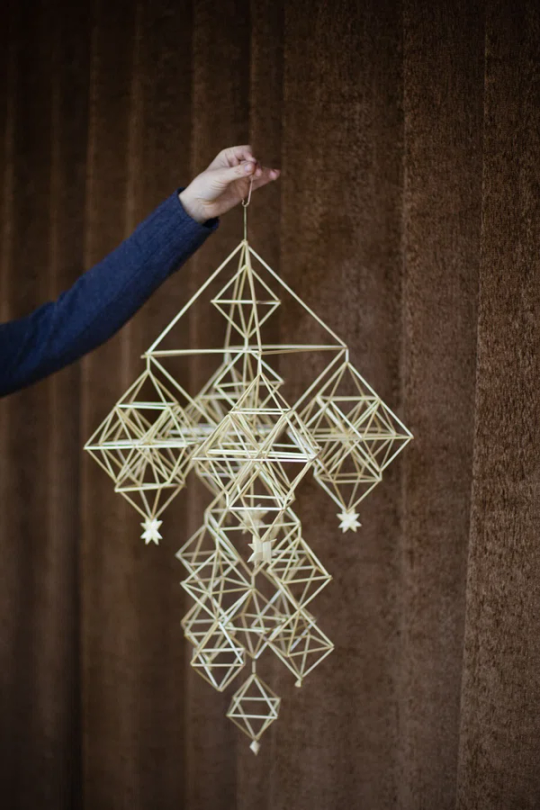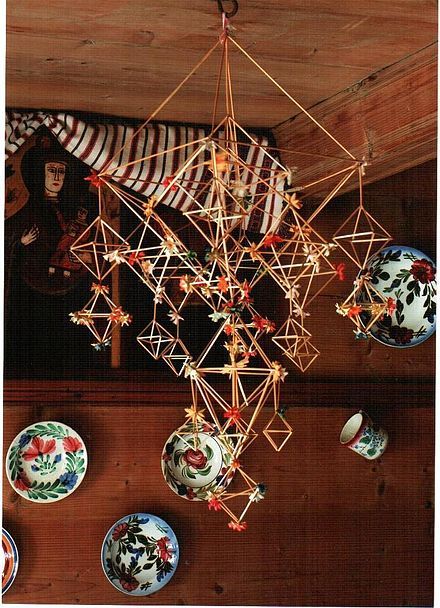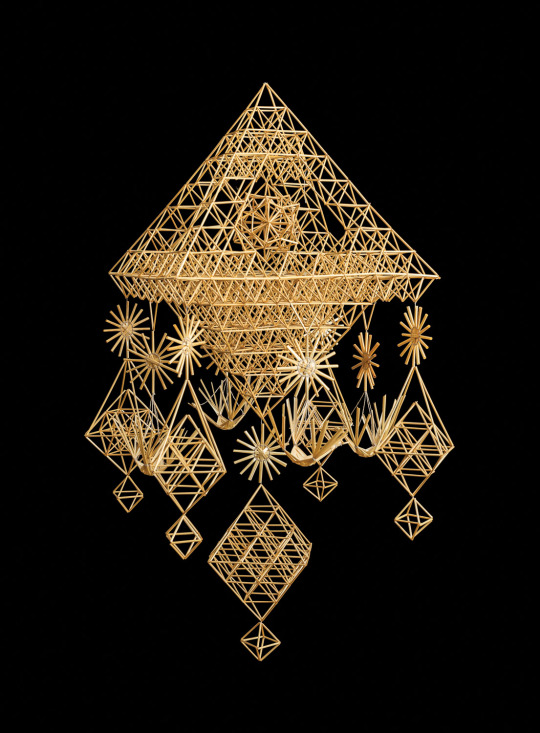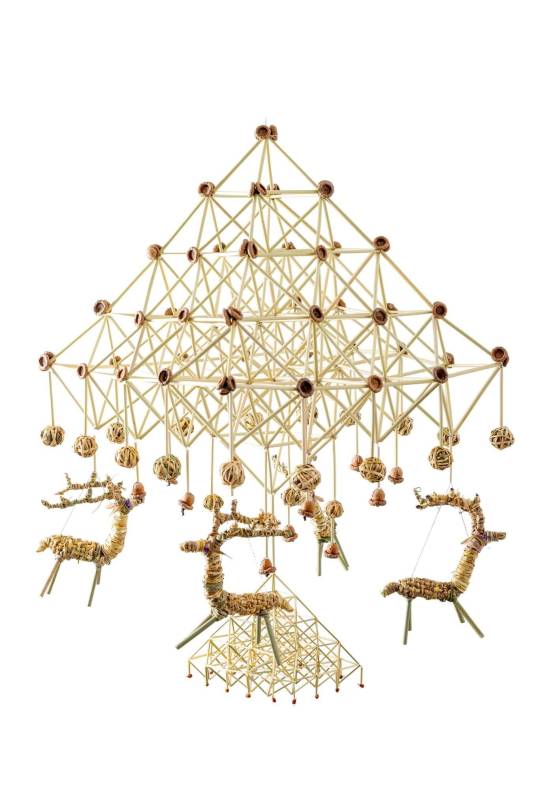#which allows me to suggest the Spider is the Grand Duchy of Lithuania tradition :>
Text






The Spider (павук) in Ukraine and in Belarus, or Straw Garden (šiaudų sodus) in Lithuania is an ancient pagan traditional decoration for the Christmas and other holidays, made of straw. Such "spiders" are considered talismans and symbols of the universe.
This decoration reflects pagan ideas about the creation of the world, the organization of space: a "spider" that "sweeps" the world - an image of the cosmos-universe.
According to Christian legend, the spider "founded" the entrance to the cave (according to another version around a tree), in which the Mother of God and the Child hid from Herod's soldiers, thus saving the Holy Family.
Spiders were hung in the house in the centre on a long hair from a horse's tail. Thanks to the circulation of air - through the front door and from the burning stove - the big "spider" together turned in different directions, casting whimsical shadows.
The Spider or Garden used to hang over the bed of the newlyweds on the first night because it was believed to have an influence on the growth of the family. When expecting a baby, the mother would tie a straw garden specially for the child and then hang it above the cradle, and the neighbors would bring a bird, angel, racket or small garden tied from straw, which they also used to make the little one happy. The baby used to observe these straw pendants, a mini model of the universe.
During the year, the spider "protected" the owners of the house, and all misfortunes and diseases were "entangled" in its web. Since ancient times, people valued fire as a sign of purification, so a spider that "lasted" for a whole year was necessarily burned before Christmas, and a new one was hung in its place.

In Ukraine, the Spider is nowadays called the Christmas Spider and is especially popular in the north. In Latvia, it has several names: puzurs, ķists, saulīte, lukturi, krīģi, spurguļi. In Lithuania, it has even more names: liktorius (Varėnos, Panevėžio r.); voras (Ukmergės r.); vorys arba pajonkas (Suvalkai, lenk. pająk – voras); pajokas (Kaišiadorys); žarondeliai (Ignalinos r.); reketukas (Kupiškio apylinkėse); rekėžis (Kupiškio apylinkėse); krijelis (Kupiškio apylinkėse); širšuonas (Kupiškio apylinkėse); dangus (Kupiškio apylinkėse); rojus (Kupiškio apylinkėse); karulys (Mažojoje Lietuvoje).
#which allows me to suggest the Spider is the Grand Duchy of Lithuania tradition :>#Ukraine#Lithuania#Ukrainian traditions#Lithuanian traditions#Latvia#Belarus#paganism#укртумбочка#укртамблер#украрт#art
440 notes
·
View notes